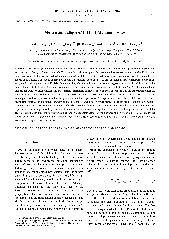摘要
Only the fatigue initiation is considered by the safe-life design approach, while fatigue crack propagation is paid more attention by the damage tolerance approach. The reasonable fatigue design method and durability assessment standard should give these two phases equivalent concerns. To develop a unified model of fatigue initiation and crack propagation, a great deal of baseline fatigue properties of a material should be obtained by fatigue experiments. However, there is lack of thorough and comprehensive experiment study on the fatigue properties of 2024-T4 aluminum alloy, which is widely used as load-bearing components in aircraft industry. In this paper, strain-controlled uniaxial, torsion, and combined axial-torsion fatigue experiments are conducted on 2024-T4 aluminum alloy in ambient air. Fully reversed uniaxial and pure torsion experiments employ solid cylindrical specimens. Fatigue experiments under the fully reversed shear loading with a static axial stress, proportional axial-torsion loading, and 90 degrees out-of-phase axial-torsion nonproportional loading are conducted by using thin-walled tubular specimens. The experimental results show that the mean stress has a significant influence on the fatigue strength of the material. A tensile mean stress decreases the fatigue life dramatically, while a compressive mean stress increases the fatigue life. The strain-life fatigue results obtained from the fully reversed uniaxial fatigue experiments can be represented by one smooth curve of a three-parameter equation. However, two fitting curves are needed for characterizing the results of the fully reversed pure torsion fatigue tests because of the existence of an obvious kink. The baseline fatigue properties of 2024-T4 aluminum alloy obtained from the fatigue experiments have applications for the fatigue design and safe assessment of engineering components.
- 出版日期2011-3
- 单位浙江工业大学
